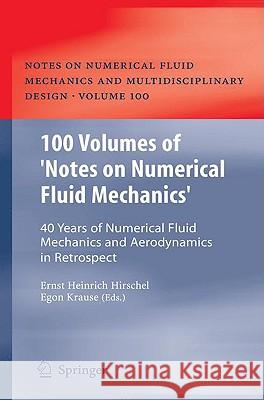100 Volumes of 'Notes on Numerical Fluid Mechanics': 40 Years of Numerical Fluid Mechanics and Aerodynamics in Retrospect » książka
100 Volumes of 'Notes on Numerical Fluid Mechanics': 40 Years of Numerical Fluid Mechanics and Aerodynamics in Retrospect
ISBN-13: 9783540708049 / Angielski / Twarda / 2009 / 506 str.
100 Volumes of 'Notes on Numerical Fluid Mechanics': 40 Years of Numerical Fluid Mechanics and Aerodynamics in Retrospect
ISBN-13: 9783540708049 / Angielski / Twarda / 2009 / 506 str.
(netto: 764,96 VAT: 5%)
Najniższa cena z 30 dni: 771,08
ok. 22 dni roboczych.
Darmowa dostawa!
Aircraft concepts are always driven by the requirements of the desired m- sion. A di?erent purpose for the use of the aircraft consequently results in a di?erent design. Therefore, depending on the intended outcome, con?i- ing requirements need to be ful?lled, for example, e?cient cruise speed and greatercargocapabilities, in combinationwith shorttake-o?andlanding ?eld lengths, or high speed and agility combined with variable payload demands. Due to the highly complex, non-linear physical environment in which aircraft operate, this task demands that the most advanced methods and tools are employed, to gain the necessary understanding of ?ow phenomena, and to exploit the ?ow physics to achieve maximum aircraft e?ciency. Inthe naturalsciences, researcherstry to create andextend humankno- edge by understanding and explaining the mechanisms of physical processes. In engineering, a designer is limited by certain requirements, and in order to ful?l these requirements the necessary technical tools need to be designed. In general, for a given problem the corresponding scienti?c or technical solution is sought. In order to successfully advance from a problem towards a solution, three main methods may be used. The two classical methods include theory and experiment, which are now being complemented by a third method, - scribedasnumericalsimulation.Theexperimentalapproachis basedonph- ical observation, measurement of relevant values, and methodical variation of the subject matter. For example, such experiments are used to gain a ph- ical understanding as well as to validate and investigate design alternative











